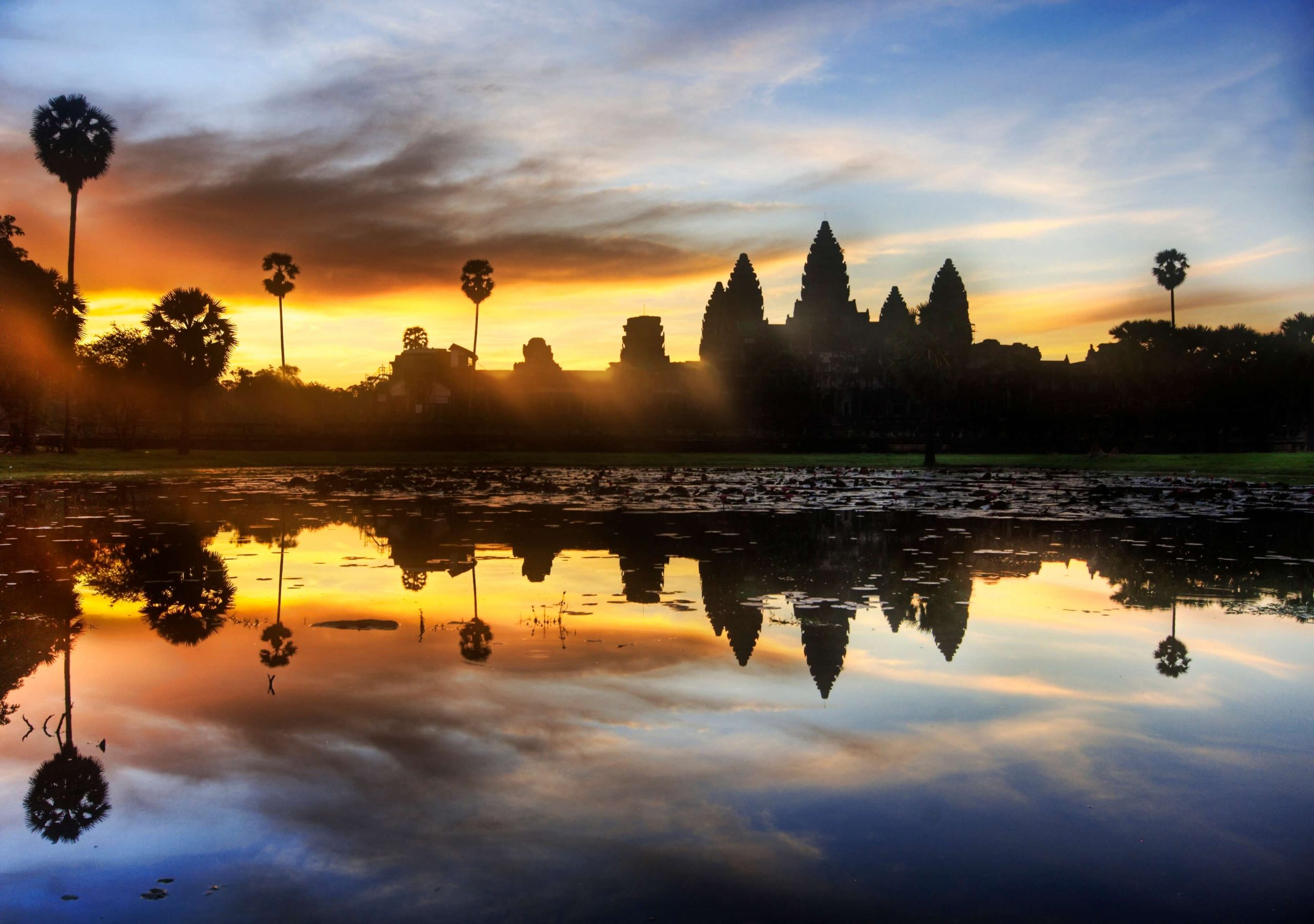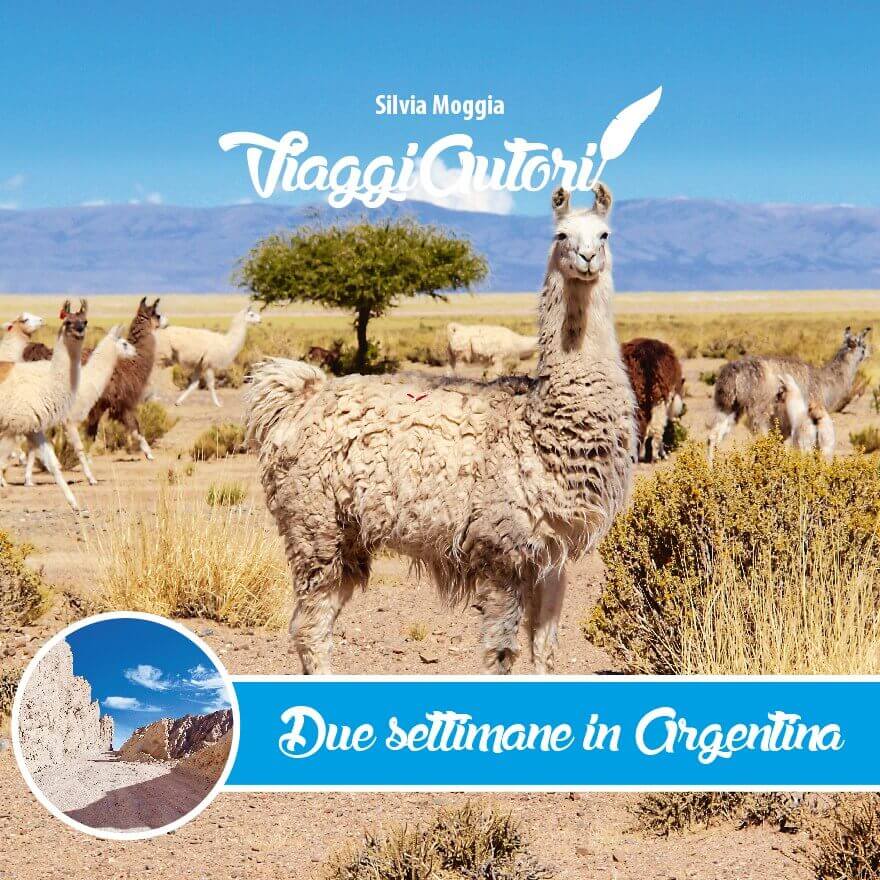I’ve felt the need to write about Siem Reap for some time now, but finding the words to describe my emotions without falling into banality is difficult. Then I postponed it, but maybe Siem Reap is trivially extraordinary and unique, and looking for other terms to define it is useless.
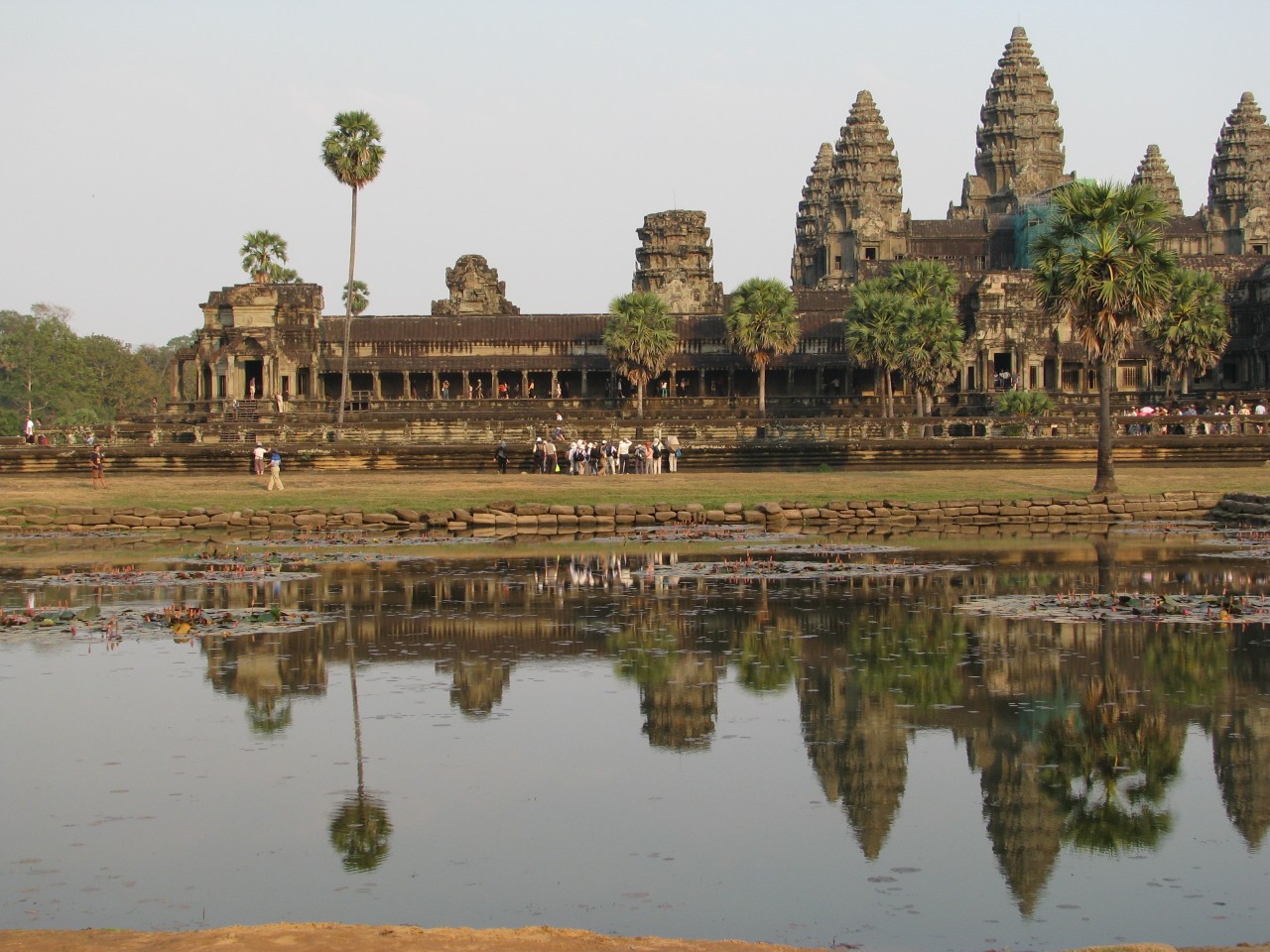
I stayed there for five days, at the end of a Cambodian journey that fascinated me by the beauty of what I saw but was unnerved by the chaos, filth, corruption, and contradictions. Upon my arrival in town, I was tired and not well disposed, but even like this, I was enchanted, and years later, I would go back to enjoy it quietly, without the chock in front of the immensity of the site.
About Siem Reap
This town on the banks of the Tonle Sap, whose name means “Siam Defeated,” has become, in recent years, the tourist capital of Cambodia, of course, thanks to its short distance from the fabled Angkor temples, which were declared a UNESCO World Heritage Site in 1992.
The town is tranquil and clean compared to the rest of the country, and tourist standards rapidly westernized with the opening of mega-hotels and shopping centres that open as quickly as pop-up windows beside traditional guesthouses and craft markets, which, it must be said, also sell many odds and ends.

Only the small French District has a certain charm from an architectural point of view. The food and beverage offerings are more varied and expensive, especially compared to Cambodian standards. Noblesse oblige …
The only source of stress is the troubling tuk-tuk drivers who literally follow you to offer their services. So much so that the night market is selling T-shirts with a “No tuk-tuk! Thank you” inscription.
*Always check on the official websites for updated prices!
The National Museum
Because the site is so vast and historically and architecturally rich, I recommend you start with a visit to the National Museum ($12 for adults and $6 for children under 12) to capture the total value of what will leave you gaping afterwards. The styles that have occurred at Angkor are, in fact, different, each with its codes and characteristics. Although the guidebooks mention it, I think the museum’s overall view can be constructive for a complete understanding.
I also discovered many architectural curiosities related to popular belief and religion that the guidebooks did not mention. For instance, why do the stairs of Angkor Wat follow a certain inclination?
The locals do not like this museum because of the Thai management and following their advice. I postponed my visit, but I was wrong. If I started here, I would have lived the rest of my stay differently, but we know that nothing is as hindsight.
The Angkor Archaeological Park
The park covers over 400 square kilometres and is surrounded by emerald green tropical forests, lakes, and the spectacular remains of different capitals of the Khmer Empire built between the ninth and fifteenth centuries.
Among them is the largest city in the pre-industrial world, inhabited by more than one million inhabitants. Like the other great civilizations of history, the Khmer also fell, defeated by ancient Siam, and Angkor was abandoned and swallowed by the Asian jungle. Only in 1860, after several visits by other explorers, did the French Henri Mouhot unveil it to the world.
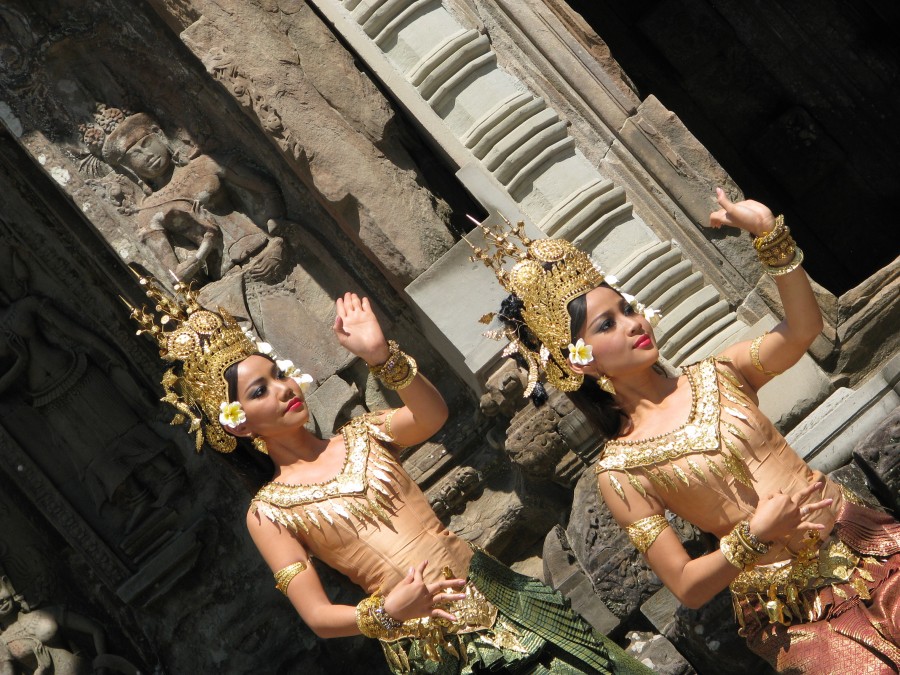
Only the religious architecture survived because it was the only one built in stone during the Angkor period. Between them, “only” forty-eight temples—divided by French archaeologists who studied the complex between the small circuit and the great circuit—are accessible to visitors, and foreigners are expected to buy a cumulative pass, including the temples of the Roluos Group.
The pass can be purchased only at official box offices, such as the APSARA, upon presentation of a passport and a passport photo. It can last one day ($20), three days ($40—to be used within one week), or a week ($60—to be used within a month). Children under 12 are given a free pass on presentation of a passport.
* If you buy it upon your arrival after 5 p.m., you can access the site right away to enjoy the sunset without this access being counted!
I needed silence, and I relied on no guide except a guidebook for sale at the entrance of the temples for $1. It is a wild copy of Ancient Angkor by Claude Jacques and Michael Freeman, and I found it very valuable. If you want it before leaving, you can also buy it on Amazon, but it’s much more expensive.
Apart from two evening bike rides to see Angkor Wat at sunset, I rented a tuk-tuk with a driver ($ 30 for three days) for tours of the various sites.
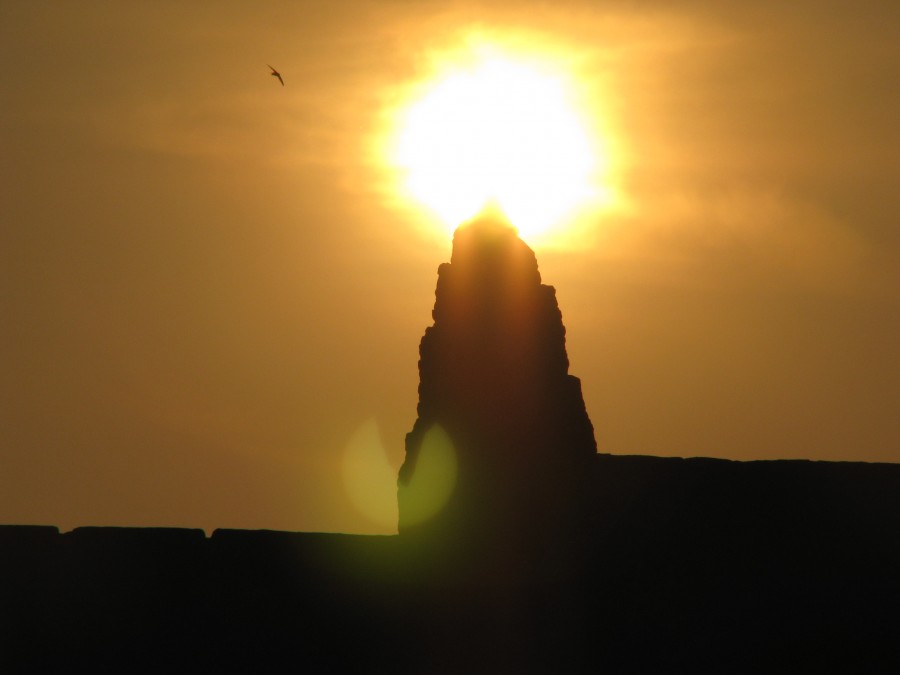
Having failed in the past, I now plan my travel itineraries so that the beauty and importance of what I’m visiting increase stage after stage.
The Grand Circuit
I started with a first full day dedicated to the Grand Circuit, about six kilometres from Siem Reap and covering twenty-six. The road to reach it passes through ordered villages and rice fields after the chaos, and after the rest of Cambodia, one gets the effect of a soothing balm. Almost every house exposes stalls for water, grilled corn, and fantastic cane sugar candies packaged in a banana leaf. The sites of this circuit are seventeen, and their beauty surprised me and left me breathless.
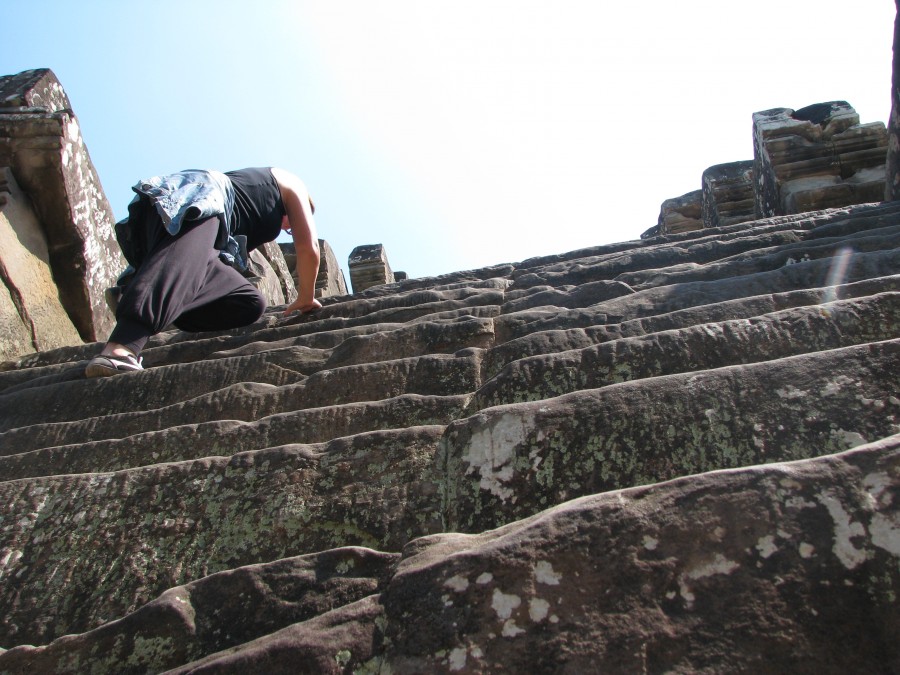
My favourite is the Pre-Rup temple mountain of Hindu origin. The reliefs and sculptures are in excellent condition, and when you climb to the summit, you can enjoy a splendid view of the Cambodian countryside.
On the second day, after a long, alas late visit to the museum, I visited the so-called Roluos Group, named after the neighbouring town about thirteen kilometres from Siem Reap. This was the Empire’s first capital, marking the architectural point of view of the beginning of the Khmer classical style. All guides will recommend a visit in the morning, but the locals advised me against it because the readers of Lonely Planet are too, and in the late afternoon, the site is almost desert and makes you dream. The sunset at the temple Bakong is genuinely magical.
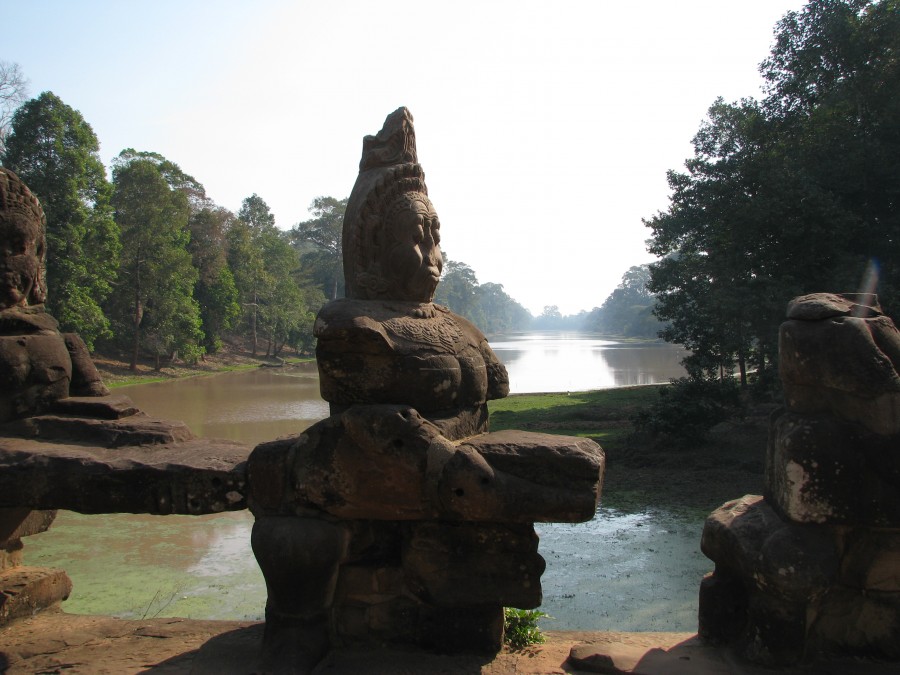
The Small Circuit
The Small Circuit covers seventeen kilometres starting from Angkor Wat. It includes the region’s most essential and architecturally spectacular temples, built to enhance Angkor Thom, the last capital of the Khmer Empire under Jayavarman VII. The heart of this fantastic citadel is the Buddhist temple of Bayon, with its smiling faces that attract the attention of those who lock eyes and its beautiful libraries that arise in the yard.
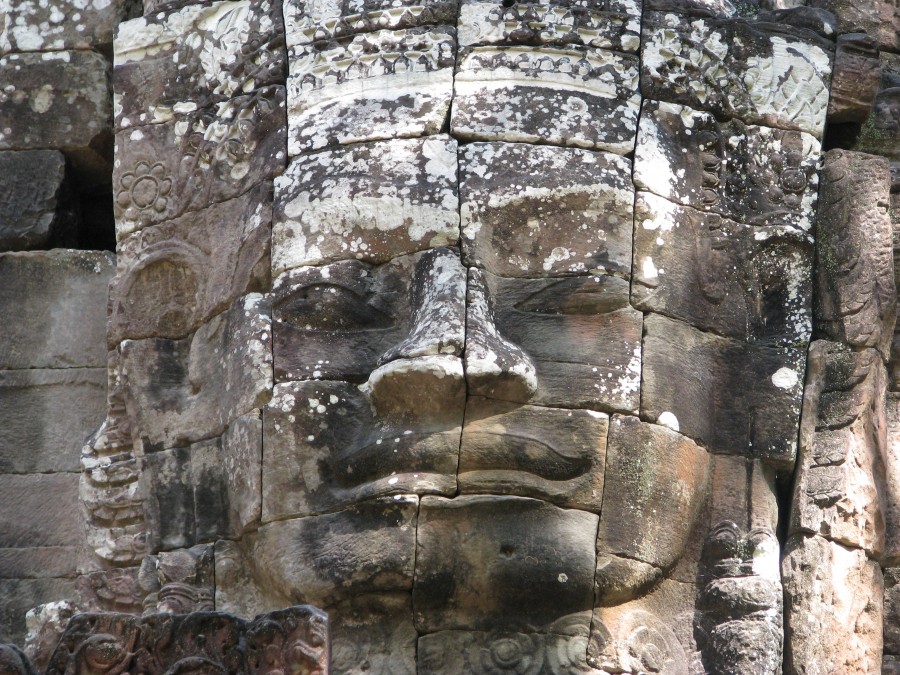
However, the most famous is the Ta Prohm, always in Bayon style; this temple swallowed by the jungle was chosen years ago as a set for the movie Tomb Raider and is now the star of the tourist area despite numerous collapses that will significantly reduce its usability.
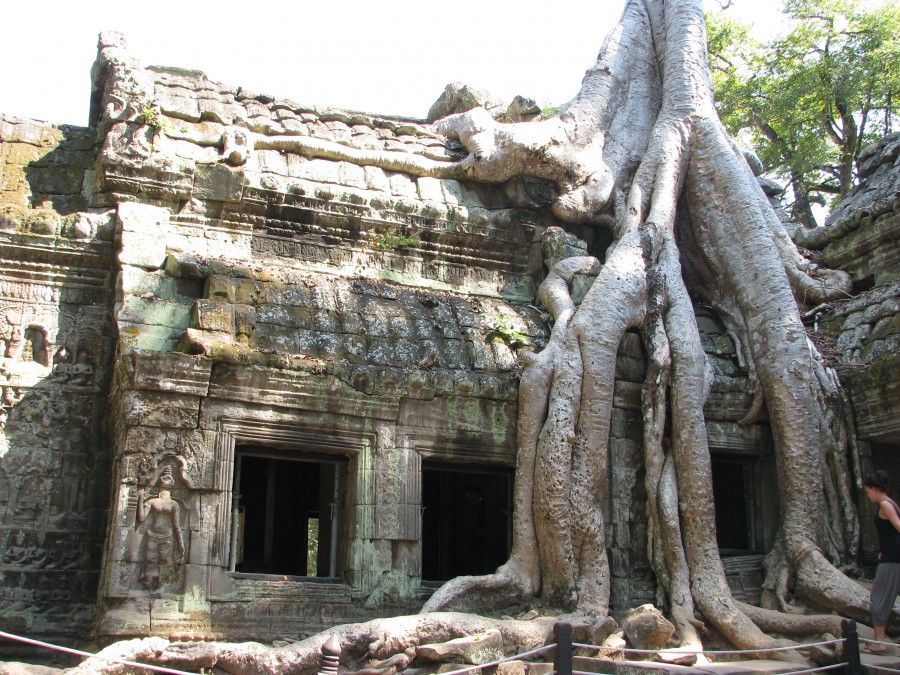
Angkor Wat
Angkor Wat is simply an architectural masterpiece. It is pure breathtaking perfection that numbs and makes everything else look not beautiful and important enough. This is just the biggest flaw of this site. Once seen, Angkor Wat and other Asian sites are not quite special, and you tend to visit them with a certain sufficiency, at least for my part.
The first time I saw it, I arrived by bicycle at sunset and sat reading along the bank of the outer moat, looking up from time to time to gape in front of such splendour. I observed the monks gradually come out and then the fantastic play of light and shadow reflections in the water between shiny pink water lilies.
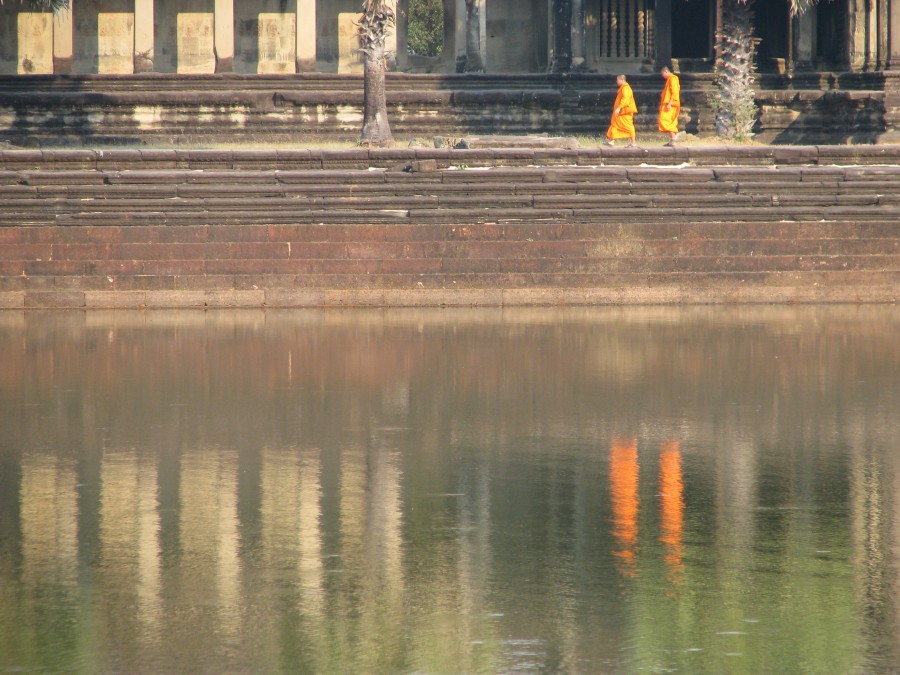
Then I returned before dawn and sat at the same place to watch the thousands of lights of many bikes and tuk-tuks approaching in the night and the torches of tourists that looked like many fireflies as they crossed the bridge to access the site. With every passing minute, the sheet of water began to reflect the sunrise, and it was magic. These were images and sensations that I will always remember.
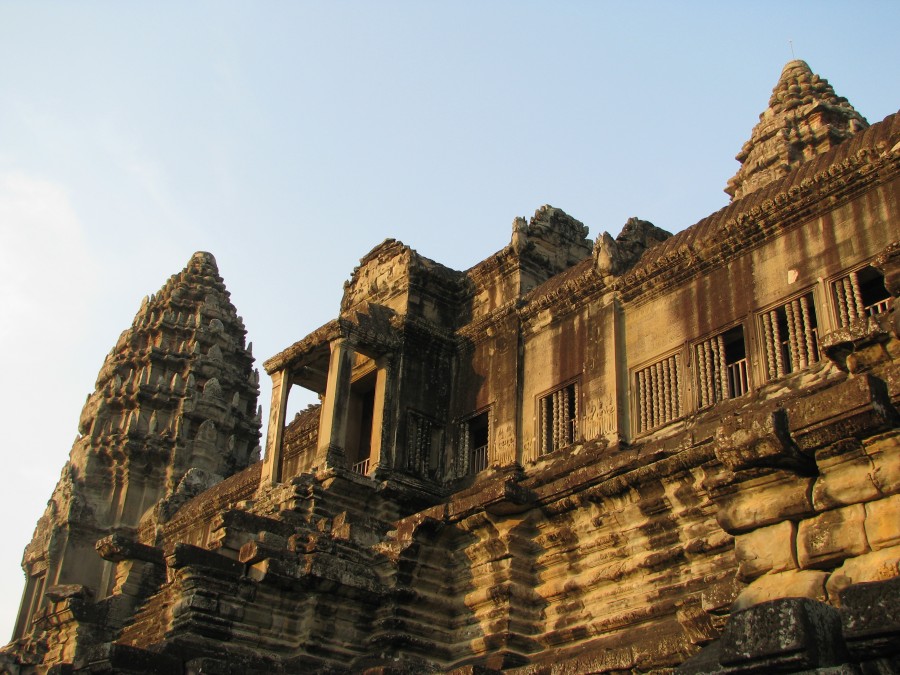
Once the sun came up, I saw a procession in reverse, and finally entering, I could visit Angkor Wat in peace. Walking among its soaring towers, labyrinthine galleries, the many rooms, porches, and overlaid courtyards, it was an incredible adventure through the history and personal fantasies also dictated by the novel I was reading, Temple of a Thousand Faces by John Shors, set right here 🙂
Angkor Wat was conceived as a funerary temple for King Suryavarman II. To fully grasp the symbolism related to death as sunset, the gallery of reliefs should be visited from left to right, as per the official funeral Hindu ritual. In truth, however, I wandered for hours, getting carried only by sensations and personal taste, and have walked along this gallery in the opposite direction …
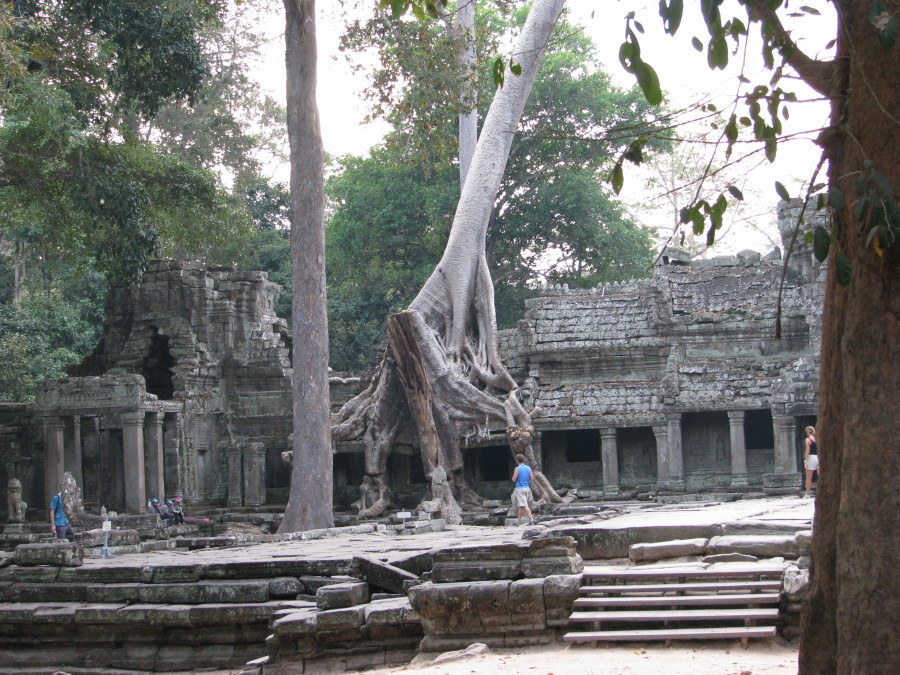
The trip to Cambodia hit me and nervously sunk me so much that I could not wait to leave. Years later, however, as mentioned at the beginning of the post, nostalgia grips me, and I need to revisit this extraordinary site. Therefore, I predict a stop in Siem Reap as soon as possible, maybe at the Water Festival in late October, to see the change in the current flow of the Tonle Sap, seen by Cambodians as a thanksgiving to the Mekong River that gives life and fertility.
* Check this post for practical tips on transport, where to sleep or eat, and what to pack.


